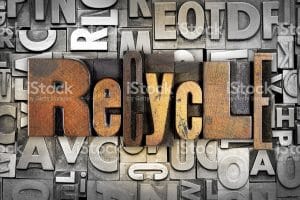Review of the Queensland Waste Levy & Recycling – Management and Resource Recovery Strategy
In 2022, the Queensland Government reviewed the Waste Levy through the Department of Environment & Science. The goal was to assess how well the levy met its objectives under the Waste Reduction and Recycling Act 2011 and supported the Waste Management and Resource Recovery Strategy. The report was released in July 2024.
As a company providing skip bins for waste removal, we want to emphasize that as a waste transport business, we are not a generator or processor of waste. We pay for waste disposal at licensed facilities and observe how they implement the levy. As a result, we see firsthand how disposal costs and the levy charged at the gate impact the industry.
Challenges of the Waste Levy & Recycling
We are at the forefront of waste disposal, constantly explaining to customers why costs are rising. Understandably, they feel frustrated by the increasing expenses. However, from our perspective, these price hikes do not correspond to real improvements in waste management. Instead, we see little progress toward the government’s goal of reducing landfill waste.
Furthermore, recycling efforts have barely changed since the levy’s introduction. For example, facilities already recycled materials like concrete, bricks, soil, green waste, and timber before the levy. However, when these waste streams contain slight contamination, facilities refuse to process them and, instead, choose to landfill the waste—while charging a premium. Consequently, the government’s failure to communicate the importance of proper waste sorting leaves businesses like ours responsible for educating Queenslanders about the waste levy.
The Reality of Waste Processing
Receiving sites charge higher rates and send waste to landfills instead of recycling it. Operators claim that extra processing costs justify price hikes. However, these increases do not seem to support meaningful recycling efforts. South East Queensland (SEQ) now faces a growing waste crisis because the levy has failed to drive real change. Additionally, the number of landfill and waste processing facilities continues to decline, making waste disposal even more expensive.
With nearly 32 years in the waste industry, I have witnessed a disconnect between government policies and industry realities. In my 2017 submission, I pointed out that the department treats waste management as a numbers game. However, real-world challenges cannot be solved through statistics alone.
The Waste Levy & Recycling: Success or Failure?
Three years after reintroducing the waste levy, the results speak for themselves:
-
A levy will not stop waste from being generated.
-
People and businesses do not prioritize recycling unless incentivized.
-
The levy mostly generates revenue while creating bureaucratic obstacles.
Strict waste classification rules and disposal procedures have made recycling more difficult. As a result, facilities have become picky about what they accept, rejecting loads that do not meet strict criteria. Consequently, more waste gets labeled non-recyclable and ends up in landfills at higher costs. Moreover, weighbridge operators make these decisions based on quick visual checks, not thorough assessments. Unfortunately, this approach discourages businesses from recycling and makes waste disposal even more costly.
The Escalation of Waste Disposal Costs
Waste Levy & Recycling – The waste levy has led to several negative consequences:
-
Higher disposal costs without real improvements in recycling.
-
More waste classified as non-recyclable, even for materials previously recycled.
-
Facilities preferring to landfill waste rather than sort and recycle it.
Initially, the government expected the levy to drive innovation in waste management. However, limited domestic recycling industries, bans on waste exports, and poor waste policies have stalled progress. As a result, achieving “zero waste” under current conditions remains unrealistic.
Looking to the Future for the Waste Levy & Recycling
The waste levy was introduced suddenly, causing steep cost increases without a transition period. Instead of fostering change, it has worsened waste management challenges. Unless the government makes significant regulatory updates and actively oversees waste operations, we will likely face the same discussions in 2027, with no meaningful progress.
Moving forward, the waste industry needs practical government involvement. Instead of relying solely on statistics, policymakers must acknowledge real-world insights. More importantly, investment in recycling infrastructure, better waste markets, and clearer public communication are necessary to create actual change.
While we hope this review leads to real improvements, we remain skeptical. Unless the government directly intervenes and rethinks its approach, Queensland’s waste crisis will only worsen.
Robert Gross – Skips Bin brisabane Group Pty Ltd

